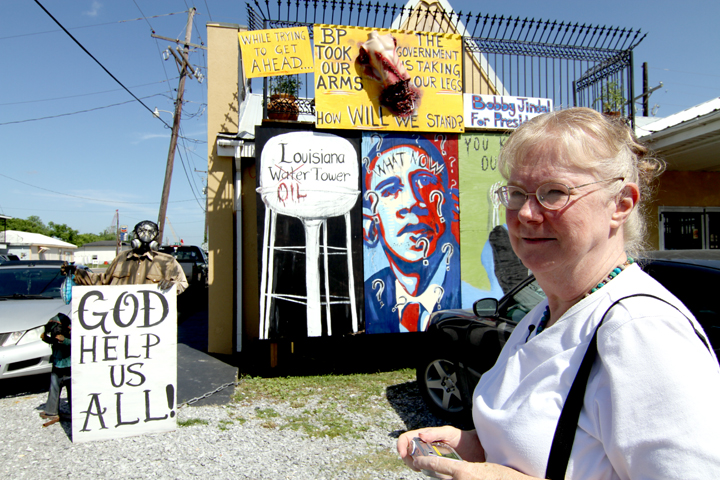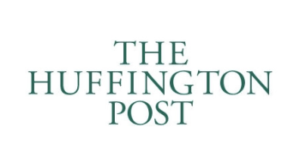Voices from the Gulf oil disaster

 It is the largest oil disaster in U.S. history.
It is the largest oil disaster in U.S. history.
Had Saddam Hussein not intentionally attacked U.S. soldiers with oil from the wells and pipelines of Kuwait in 1991, it would be hands down the largest oil spill in the history of the world. It was also preventable, foreseeable, and, if nothing changes, it could happen again.
On the night of April 20, 2010, the Deepwater Horizon lost a game of chicken with the Macondo oil well. Dubbed the “Well from Hell,” the oil buried 18,500 feet below the ocean’s surface fifty miles off Louisiana’s shore had made it clear time and again that it had no intention of being pumped out of the earth. But BP, the fourth largest corporation in the world and the third largest oil company, refused to listen.
BP was not alone. Government regulators, playing out their overly intimate and trusting relationship with the oil industry, rubber-stamped every cost-cutting and progressively deadly decision. Transocean, the largest operator of oil and gas rigs in the world, and Halliburton, the world’s largest energy services company, among others, were part of the disaster, operating with what may be determined to be criminal behavior. The problems identified on the rig are problems that persist across the entire industry.
Eleven men died. Neither Keith Jones nor Sheri Revette needed to wait for the phone calls, they knew the moment they saw the images of the explosion on television that his son and her husband were dead.
When the Deepwater Horizon capsized into the ocean, it released BP’s oil and gas monster into the Gulf of Mexico. Only then did we learn the horrifying truth: not a single oil company among the largest, wealthiest, and most powerful corporations in the world was the least bit prepared for a deepwater blowout, even though all had written plans certifying their ability to handle far worse disasters. They, along with the government that was supposed to be regulating them, learned “on the fly” for three long months to cap the well. However, not felt sure that the well was stopped until five months later, when the relief well was finally complete.
Five million barrels of oil and some 500,000 tonnes of gas were released. Ripped out of the earth’s core, forced out of the well, the oil and gas exploded into the U.S. Gulf of Mexico spewing forth in a torrent as much as 80,000 barrels of oil a day strong. The monster laid forth a deadly rampage that would take it across the Gulf and onto the beaches, wetlands, and shores of four states. It would, however, be well over a month before the public would be let-in on the secret of the full size of the monster. Both BP and the Obama administration did their best to hide the truth, and then assured us that the monster was gone long before this was so.
Dr. Samantha Joye was among those scientists who went on a hunt for the Macondo oil and gas monster and discovered it lurking below the ocean in giant plumes and looming today on the ocean’s floor. Her young daughter Sophie now routinely asks, “have you fixed the ocean yet, mommy?”
In a case of the “cure” being, in many ways, worse then the disease, nearly two million gallons of toxic chemical dispersants were simultaneously mixed into the water and sprayed from the air, while at least 410 fires were ignited on the water’s surface to burn the oil away. The impacts on those living in, on, and from the water are profound, ongoing, and deeply interrelated.
Thousands of animals died, including sperm whales, endangered sea turtles, dolphins, fish, and birds — even the state bird, the brown pelican. The entire food chain was impacted along the way and the long-term impacts on countless species and their habitats remains an open question.
Jamie Billiot’s worry, as that of her entire United Houma Nation Native American tribe, is if the next storm will wash up oil and dispersant and make the land they have called home for over 100 years uninhabitable. Kindra Arnesen, living on the frontlines of the oil’s worst impacts, struggles to protect her children, made ill from both oil and chemical exposure.
Vinh Tran and his mother Rot Thi Lam, were standing at a seafood processing plant in Bayou La Batre, Alabama, digging meat out of a crab’s shell, when the Deepwater Horizon exploded. Within days they were sent home and denied work for months thereafter. With the waters closed, fishers, like Kermit Duck, had nothing to fish and struggled to support their families.
Fish markets had nothing to sell, fresh seafood restaurants nothing to cook, and seafood processors, like that at which the Tran’s worked, had nothing to process. For towns like Bayou La Batre, where an estimated 80 percent of the workforce makes its living from the commercial seafood industry, the effects were immediately devastating. As the oil-mixed-with-dispersant continues to rest on the bottom of the ocean floor and in the eggs and reproductive glands of the Gulf’s sea creatures to this day, the disaster continues to loom as a potential death knell to their entire way of life.
Advocates like Wilma Subra of the Louisiana Environmental Action Network and Dr. Riki Ott fought back. They tracked dispersants, worked on behalf of public health and the rights of workers hired to clean up BP’s oily chemical mess. David Pham, age 25, kept his small office of Boat People SOS afloat helping the East Asian community across the Gulf navigate BP and then Kenneth Feinberg’s nightmarish claims process. Environmentalists such as Casi Callaway of Mobile Baykeeper, Keiran Suckling of the Center for Biological Diversity, and Anna Aurilio of Environment America protected the wildlife and wild places under attack from the shores of Alabama to the halls of Congress. Texas fisherwoman Diane Wilson and the many women of Code Pink staged critical protests from Houston to Washington, DC, holding Tony Hayward, BP, and the entire oil industry to account.
The Obama Administration launched a historic response effort in the wake of the disaster including tens of thousands of government employees, national guardsmen, and military personnel who made heroic sacrifices. Nonetheless, this was far from a government success story.
The Administration’s ultimate failure was an attempt to make the whole thing disappear from public sight and mind — whether through propaganda or dispersants. The Administration also left far too much of the response effort in BP’s hands, allowing a corporation to determine life and death decisions about public health, worker safety, economic livelihoods, the environment, and entire ecosystems that should never have been it’s to make. By minimizing the size and significance of the disaster, moreover, the Administration played right into the handsof an oil industry working to ensure that no meaningful long time policy changes emerge.
Fortunately, there are those working for change.
As the one-year anniversary of the explosion moves into Earth Day April 22, it is time to call for a full moratorium on offshore drilling to ensure such an event never occurs again. We must demand immediate financial compensation to those whose lives and livelihoods continue to be devastated and to begin immediate restoration of the Gulf.
